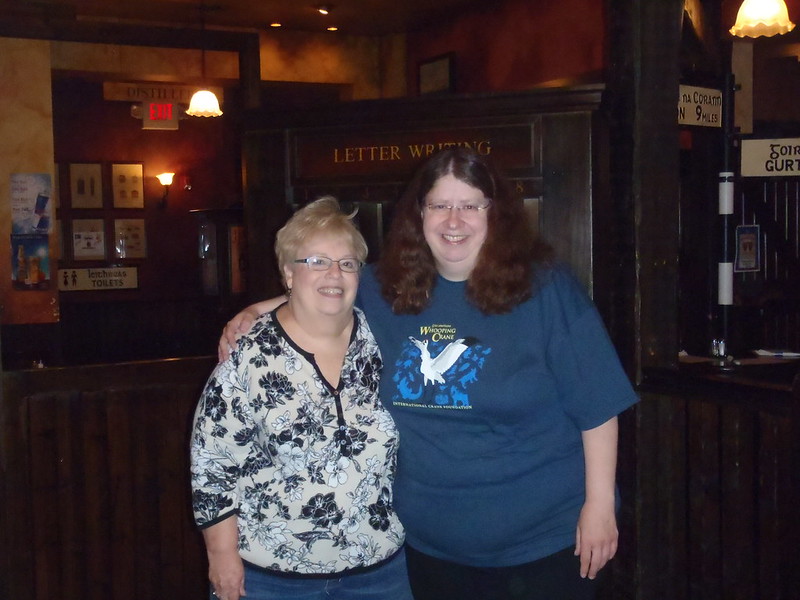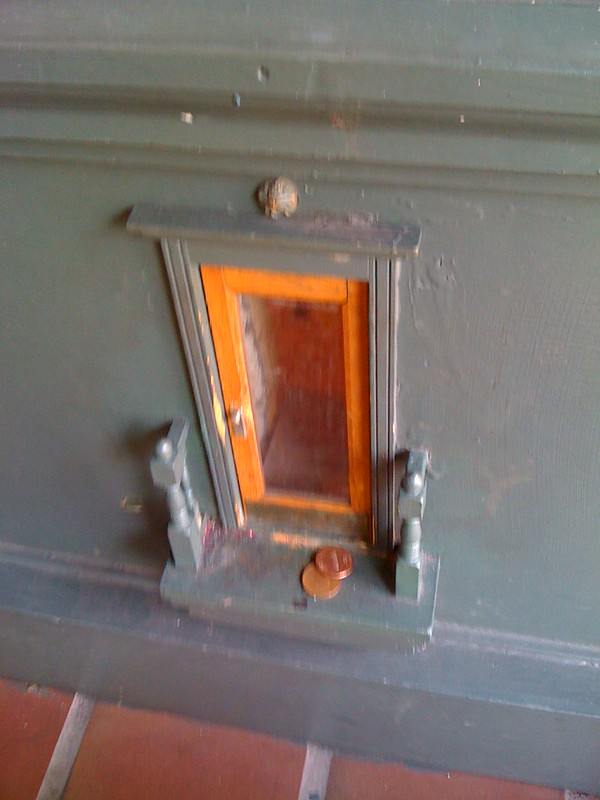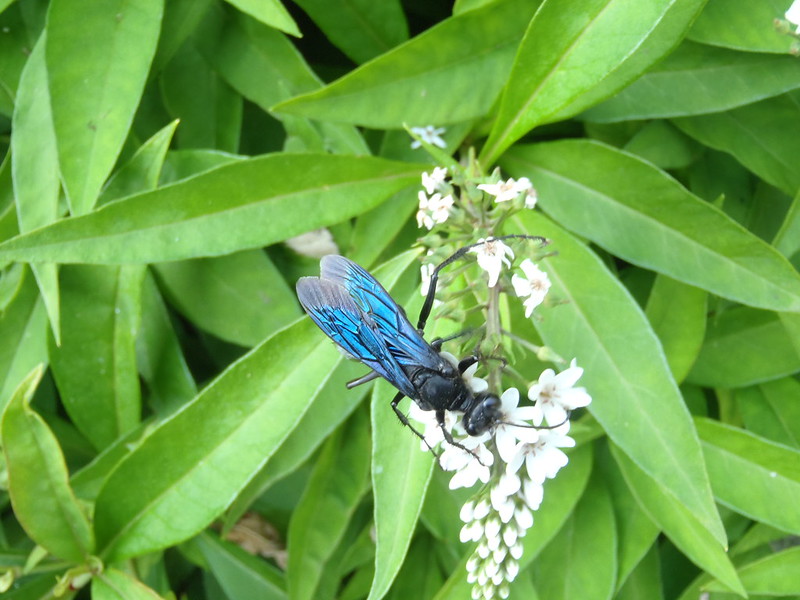Last Friday a Thorn Creek Woods Nature Center volunteer left me a voicemail that that evening’s Owl Prowl was off due to rain, postponed to the 16th. As we talked to our guide and others, we learned it wasn’t the rain so much as the result of it — muddy, slippery trail conditions, especially as part of the trail passes through a floodplain.
The volunteers had quite a spread of materials, from handouts to illustrated bird books open to pages about the species we were to hope to hear and/or see — the eastern screech owl, the barred owl, and the great horned owl.
We waited a while for latecomers and no shows. As we were about to set off, a couple with a teenage daughter said she wasn’t feeling well and they’d have to drop out. From the look of her, either she had cramps (I know the feeling), or she’d watched one too many gory horror movies set in the woods and didn’t think setting out on a hike at twilight with a bunch of strangers was a good idea. With our leader and trailer, there were about 14 of us. Surely only the most observant of owls would notice us!
It was past sunset when we did set out. Our guide tried to teach us to use our peripheral vision to look ahead, yet spot trail obstacles like tree roots, fallen trunks or branches, and steps, as well as to look beyond the most prominent foreground objects in the waning light, to use three-dimensional vision to see in the distance in the growing darkness. That I could do, but I couldn’t keep my head and my eyes directed up. Even with looking down in daylight and seeing everything clearly, I tend to walk trippingly — and I’m still plagued by a fear of falling while walking. I did try, though.
At a second stop, our guide tried to show us how to walk more quietly {“stalk” Native American style) by putting the outside ball of the foot down first rather than the heel and rolling the foot in. I tried this, too, slightly more successfully if not consistently. It’s tiring if you’re not used to it, as she pointed out. I also found it’s hard to coordinate all these different ways of doing things — stalking with head up, using peripheral vision, looking into the distance while being aware of the immediate surroundings and obstacles. I’m afraid I lapsed quickly into my usual head-down shuffle. No matter — neither the owls nor anyone else in the woods was fooled.
At one point, most of us heard a branch snap to the right, which we agreed must have been a deer. J. began whispering that there’d been news about eight escaped convicted killers — as though that would make me nervous.
At one point, J. and I are certain we heard a “hoo hoo” or something similar in the distance, although our leader had not. I looked up and around and took in the tangle of branches, leaves, and mysterious shapes against the sky, which seemed brighter than I would have expected, but didn’t see any owl shapes or movements. When we stopped, our leader would do a fair impression of owl calls, but if any owls were about they weren’t fooled into giving up what they were doing to return the calls. I was reminded of a visit to Starved Rock State Park earlier this year. While I was waiting along the trail for J., out of the near silence a great horned owl (I think) began to call from a spot not far off. After several calls, spaced widely apart, they ended as abruptly as they’d begun. I couldn’t have told you the distance or direction; they seemed to be disembodied in the stillness.
As we walked I noticed my night vision is not as good as I remember — but then my memory could be faulty. At a few points, not always in the thickest or darkest patches of woods, I began to be overcome by a feeling of panic because I couldn’t see anything and of vertigo, that the world was tilting and that I was going to lose my balance. Blind and unbalanced — just what you want to be when walking in the woods and over narrow boardwalks and bridges in the dark.
We had been asked not to bring flashlights, which would disrupt our night vision. Our leader and trailer each carried one for emergency use only. That’s why I was surprised when now and then I seemed to see a bit of light coming from behind me, just a flash, enough to help me get or keep my bearings or to see the person in front of me. At times these flashes or hints of light seemed like the disorienting visual tricks that sometimes accompany a migraine, and they made me feel almost queasy.
We walked back relatively quickly and noisily, with many calls of “step!” and “tree root!” for the benefit of those behind. Despite the difficulty I had seeing at times and the resulting disorientation, I was amazed by how bright the sky remained nearly two hours after sunset but before moonrise, which would have been obscured by the cloud cover anyway.
After coffee and cookies and just as we were about to leave, we learned what had really happened to the preserve’s north bridge, which is out and is being rebuilt. I’d assumed that it had become rickety and precarious with time and weather; even now, the remaining south bridge exhibits unevenness and a disturbing tilt. It came up in conversation that the north bridge had been in better shape than its sibling and was being replaced only because someone using tools had systematically dismantled it. One young woman with blue-streaked hair exclaimed grimly, “They’re lucky I didn’t see them because I’d have killed them.” That seemed to be the universal sentiment. I’m trying to imagine what nasty impulse could have prompted such a destructive outburst of energy, which had to have been carefully planned, coordinated, and executed. The perpetrators haven’t been identified.
If only the owls, deer, coyotes, and other animals could talk. I assume they can’t use tools.
After running a quick errand in Park Forest, we settled down to a late dinner at the Chicago Dough Company — not pizza this time, just sandwiches. What a relief. I’m ashamed to say I could not have taken one more step.









